We were now off with a smaller group for an extended, but far too short, stay in Oman.
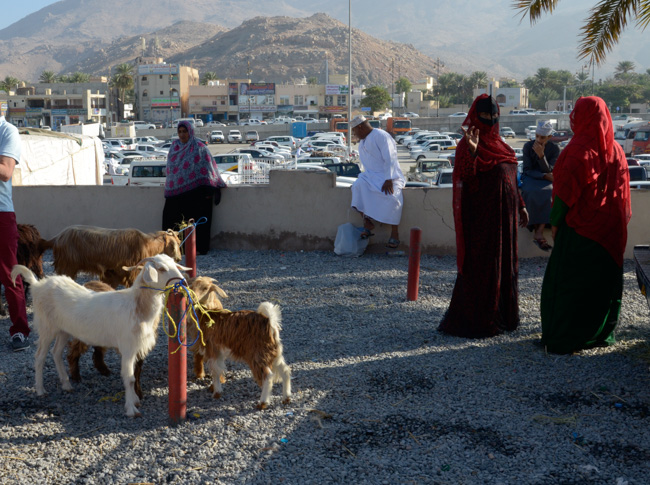
Our first destination was the Nizwa Goat Market. We visited on Friday, the busiest day. Goats aplenty, cattle, and even a couple of camels in the parking lot were all on offer. Locals milled around buying and selling with a few tourists taking pictures. This was a quiet corner.
The goats here were a step above those along the highways pruning trees and shrubs, and they brought good prices.
Elsewhere in the souk were birds (songbirds in addition to poultry), produce, pottery, guns, rope -- you name it.
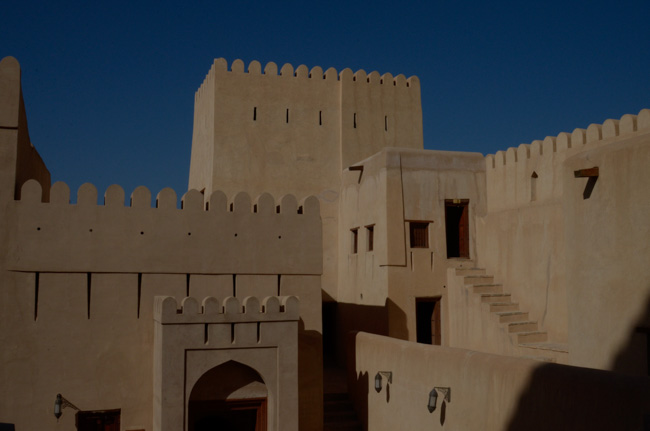
Another attraction in Nizwa was the fort. It was extensive with many interesting exhibits. This city was the capital of Oman in the 6th & 7th centuries and the place that first welcomed Islam into the region.
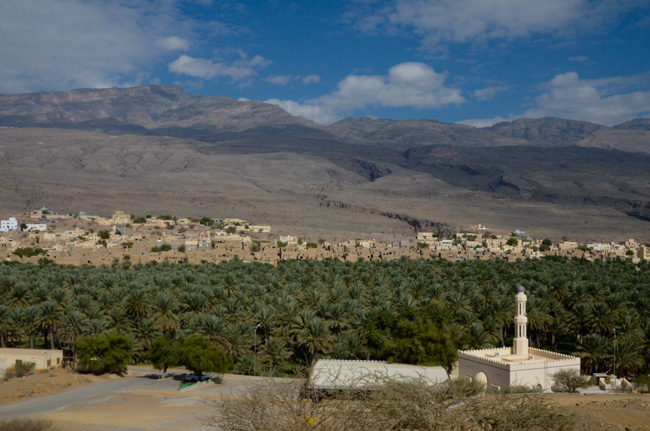
Our next stop overlooked Al-Hamra, the "red city." The darker buildings on the other side of the date palm plantation are many hundreds of years old. We visited a house museum illustrating traditional practices.
This area is blessed with ample spring water that has, since ancient times, been channeled for irrigation by way of a aflaj system. The system is still in use.
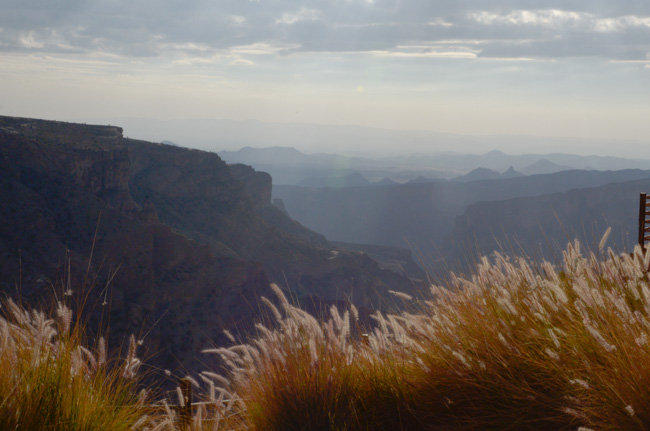
After our visit to Al Hamra, we began the long climb up Jabal Akhdar to our home for the next two nights -- the Alila Jabal Akhdar. A checkpoint at the bottom of the mountain ensures that everyone has four-wheel drive before starting up the mountain. The main roads were steep but in good repair so the 4WD requirement wasn't strictly needed for them. I expect the secondary roads were more treacherous.
The hotel was spectacular in itself and the views were reminiscent of our Grand Canyon.
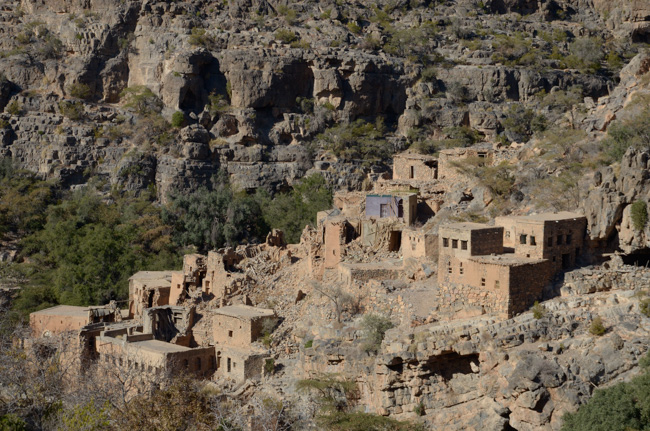
The following morning we piled back into our 4WD vehicles for a visit that started with Wadi Bani Habib. To my frustration we were not allowed the time to walk down into the wadi to explore the abandoned villages directly.
Most such villages were deserted because of easier jobs and better housing in the cities, but we were told that this one had additionally suffered from British air strikes during the Dhofar Rebellion, which began in the 1960s. The rebellion ended when the current sultan deposed his father and organized both a better military response and a successful "hearts and minds" campaign to unify the country.
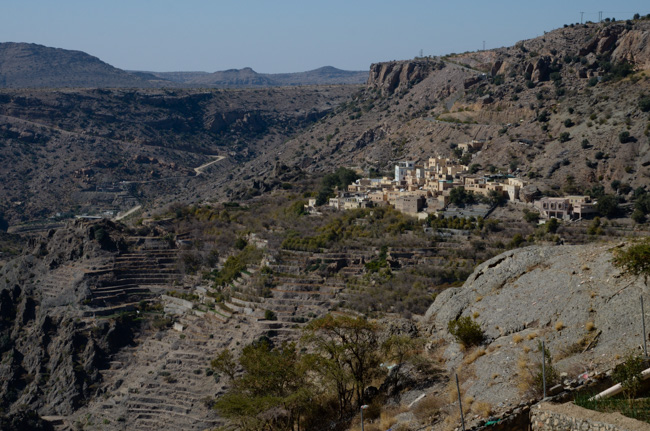
I was able to get my wish of a good walk when we drove to the nearby village of al Ayn, seen here above its extensive terraces, mostly gone fallow. Although this area is still occupied and farmed -- the cash crop is roses for rose water -- many of the inhabitants have moved on to easier lifestyles.
We started our walk at the village and have proceeded along the mountain side (protected by a sturdy chain-link fence) to the next village, behind me. It was a rugged walk at times and it felt good to stretch my legs. Jim enjoyed it too although it was rougher than expected.
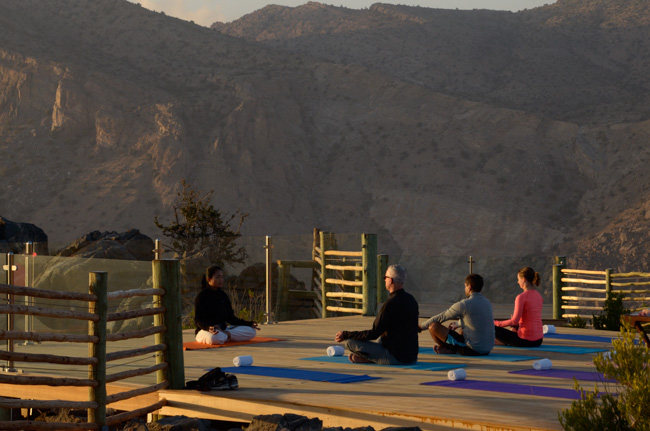
After our walk and lunch at the beautiful new Anantara Resort Hotel we returned to Alila. This platform overlooking the canyons is used for dawn and dusk yoga sessions. Three guests joined the leader to experience the sunset.
It was a beautiful location and even though I'm not a yoga practitioner I enjoyed watching the sun go down over the valley.
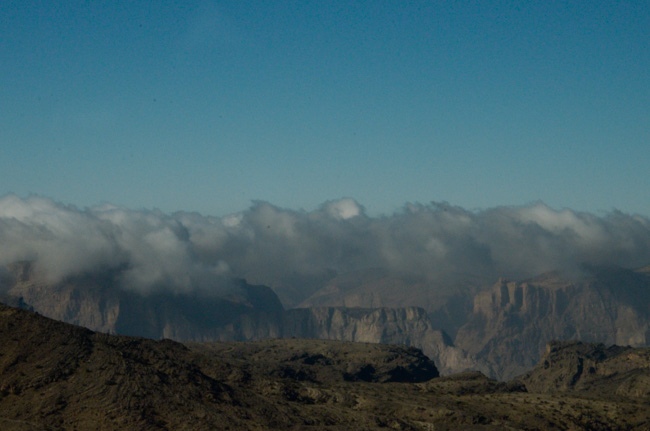
The next morning we departed the mountains for desert dunes. The drive down was spectacular with cloud banks throughout the mountain valleys.
I had not expected Oman to be so beautiful!
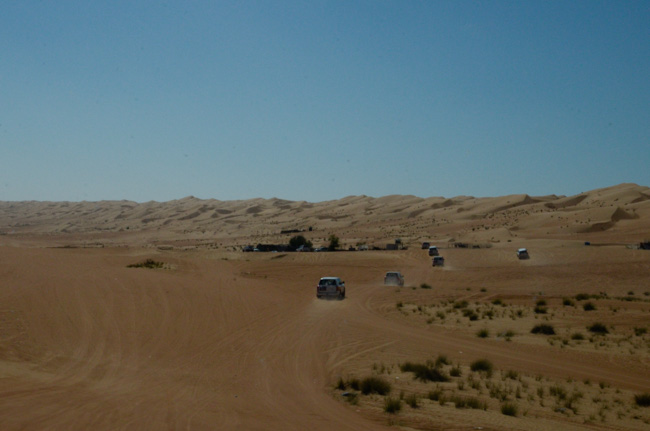
At Wahiba Sands we expected to make a home visit with a Bedouin family. As it happened, we visited what appeared to be their "shop" and had ample opportunity to purchase a variety of hand-made goods and trinkets. The encampment was located between the dunes and the oasis village. We were told that most families had elected to purchase a village house although many still ventured into the desert from time to time with their stock.
Their primary occupation is raising valuable racing camels.
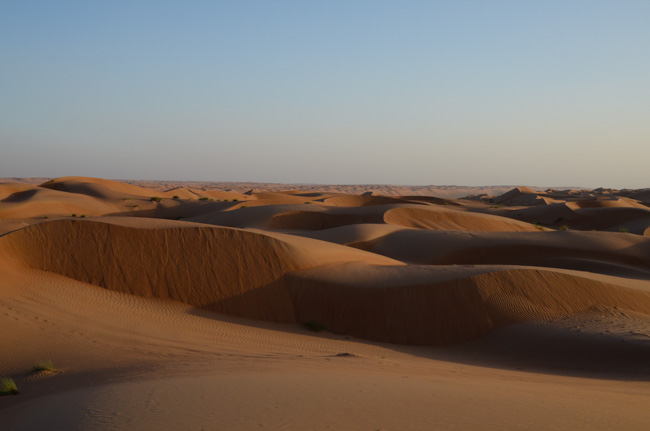
After checking into the Desert Nights Camp, where we would spend the night, and taking some time to relax, we piled back into our vehicles to drive deeper into the dunes to observe the sunset.
The dunes are made of a fine reddish sand. In many places there were grasses growing in the sand. Down in the lower areas we saw herds of camels grazing on the sparse greenery.
Most of us tourists preferred to wander along the dunes, but most of our drivers departed to "dune bash" to their hearts' content. There were few places among the dunes that didn't have car tracks.
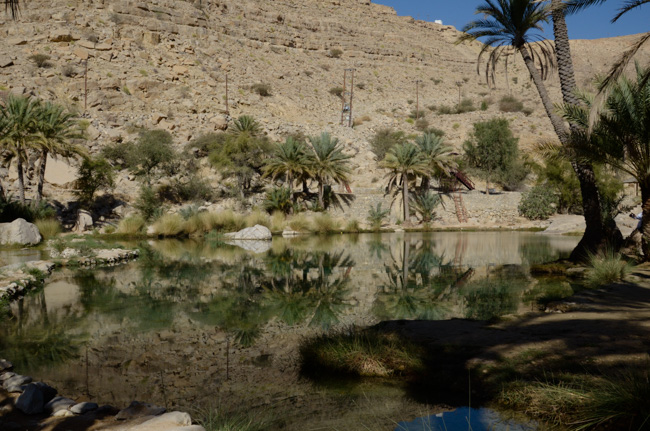
The next morning our group began to break up. Some folks left early for morning flights home. Others had afternoon flights and spent the morning at the camp before transferring directly to the airport in Muscat. We joined others with late-night flights for an additional day of touring along the "wadi route" and the seacoast.
The most beautiful of the wadis was Wadi Bani Khalid. We drove up a fertile valley and through several villages to reach a series of clear ponds. Our tour leader, Harry, stripped to his skivvies for a brief swim in the warm waters (in spite of multiple "no swimming" signs).
We were told that on a weekend or holiday this area would be jammed with local tourists. I can believe it!
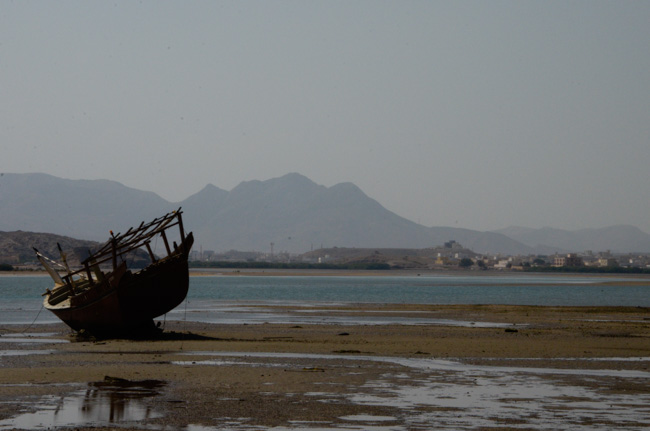
We reached the coast at Sur, a ship-building center south of Muscat. The drive up the coast with stops to visit a dhow factory and then a picnic lunch at another lush wadi was a fitting farewell to Oman. It was the highlight of our Gulf vacation and I recommend it to anyone traveling in the area. There was much more to see and I wouldn't mind returning -- if it weren't so far away!
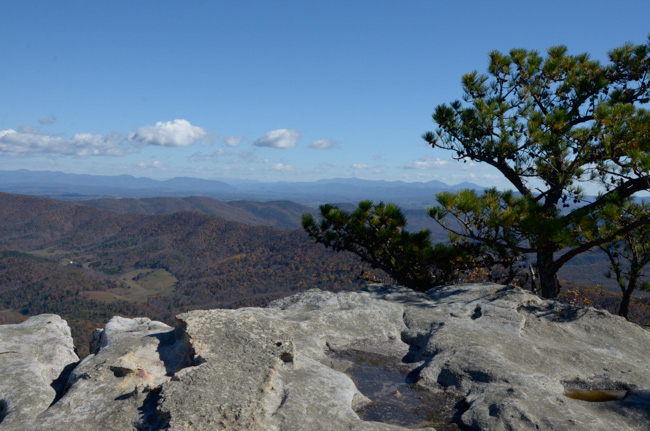
As always, the best part of any travel is coming home. I will hold up western Virginia to anywhere on earth for beauty as this view from McAfee Knob shows. I climbed up with our local Newcomers' Club hiking group not long before we left for our Gulf trip.
Click your "back" button to return to the previous page or click for our picture album.